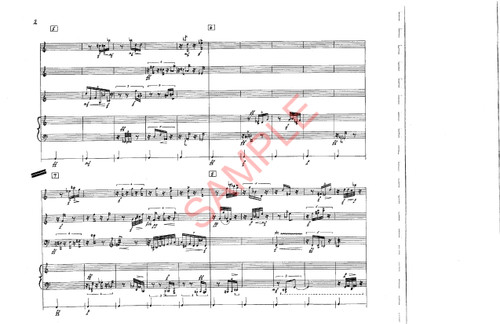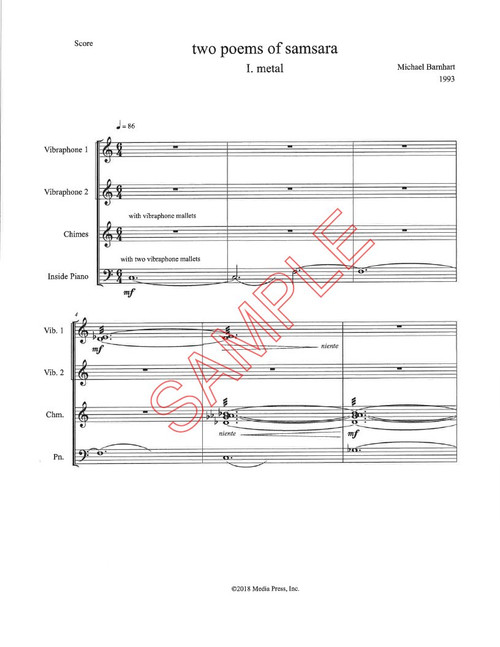For percussion quartet, includes 4 scores. This popular work for percussion quartet requires the following instruments: Player 1. Xylophone and tubular chimes; Player 2. Four tom-toms; Player 3. Two suspended cymbals and bass drum; Player 4. Four timpani. Four scores are provided. Duration: ca. 4' 10"
Want it now? Click here to purchase a digital copy of this product.
Review from Percussive Notes:
Scored for percussion quartet, this piece was composed in 1972 but recently published by Media Press. The music is pointillistic, edgy, character-driven, and clocks in at around three minutes. All the instruments are quite common to any school music program, making it ideal for performers with limited access to instruments or those wishing to perform this as part of a tour or outreach concert. No parts were included with the piece, only a score. However, the contrapuntal nature of the music could lend itself to performers desiring to read from the score, even if a conductor is used in performance.
Set at quarter note equaling 144, the sections of the piece alternate between interweaving counterpoint from all four players and those where rhythms are reinforced in a 2+2 or 3+1 scoring. Although not intended as a mallet feature, the xylophone/ chimes part does sound soloistic, as it is the only melodic voice in the piece, even when scored to complement the rest of the ensemble. The xylophone part is the most technically demanding, as it includes brisk chromatic passages, double stops in wide harmonic intervals, and occasional block chord four-mallet passages. While not terribly difficult, the other parts present challenges due to the quick tempo and confidence required in executing individual lines in counterpoint with the ensemble; for reference, think the faster sectionsof Carlos Chavez’s “Toccata for Percussion.”
One critical comment relates to the notation of time signatures, which are only printed in the middle of each score system. While this certainly creates a cleaner and aesthetically pleasing appearance on the page, the frequent meter changes become difficult to follow when reading an individual part. If performing the piece myself, I would have to notate the time signatures on my specific staff with a pencil. Other than that one, easily fixable issue, “Polyphonies” is an exciting, short work that would be appropriate for an advanced undergraduate to professional quartet.
—Jason Baker
Demo:







